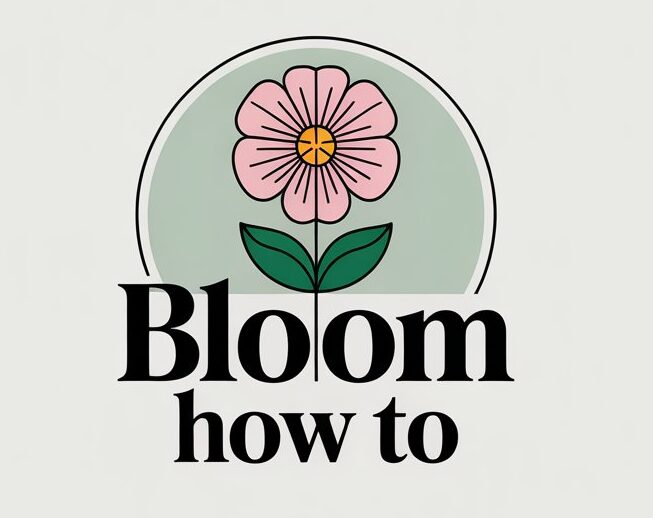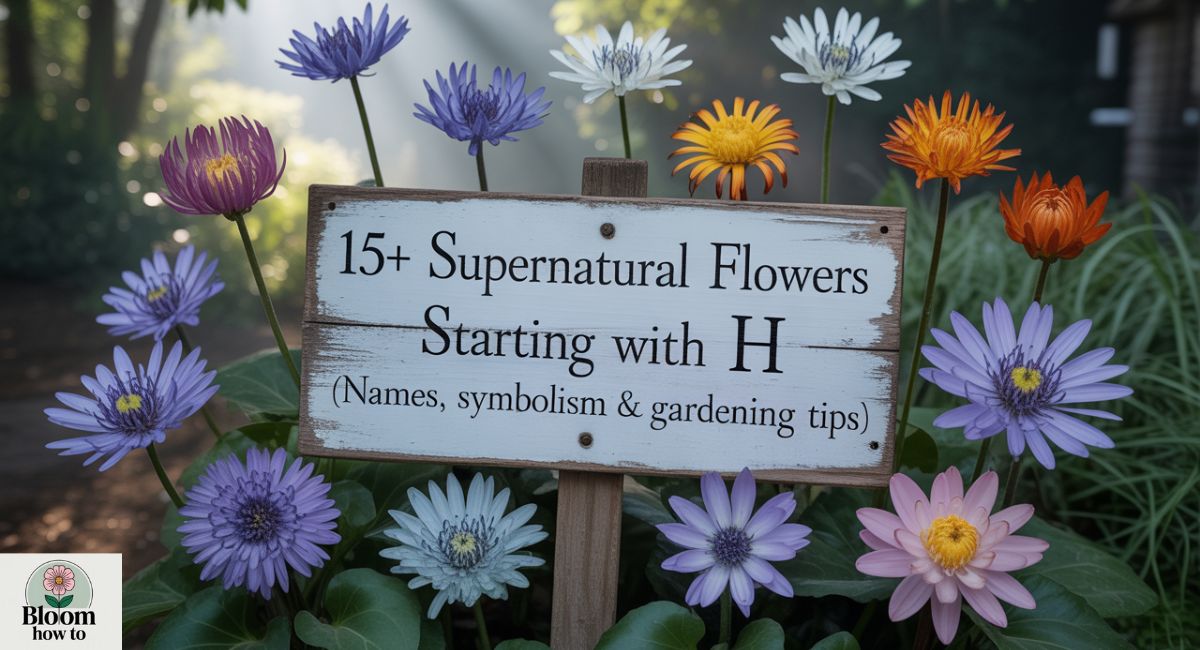Finding unique flowers that start with H can feel like stepping into a secret garden. These blooms aren’t just pretty; they’re filled with history, cultural meanings, and surprising gardening uses. From bright tropical blossoms to delicate wild species, each plant holds a story worth knowing.
In this guide, we’ll explore 15+ beautiful flowers starting with H. You’ll learn their names, symbolic meanings, and easy gardening tips designed for American climates. Whether you want to decorate your yard, add fragrance to borders, or grow something rare, this list will give you inspiration and practical help.
Hibiscus
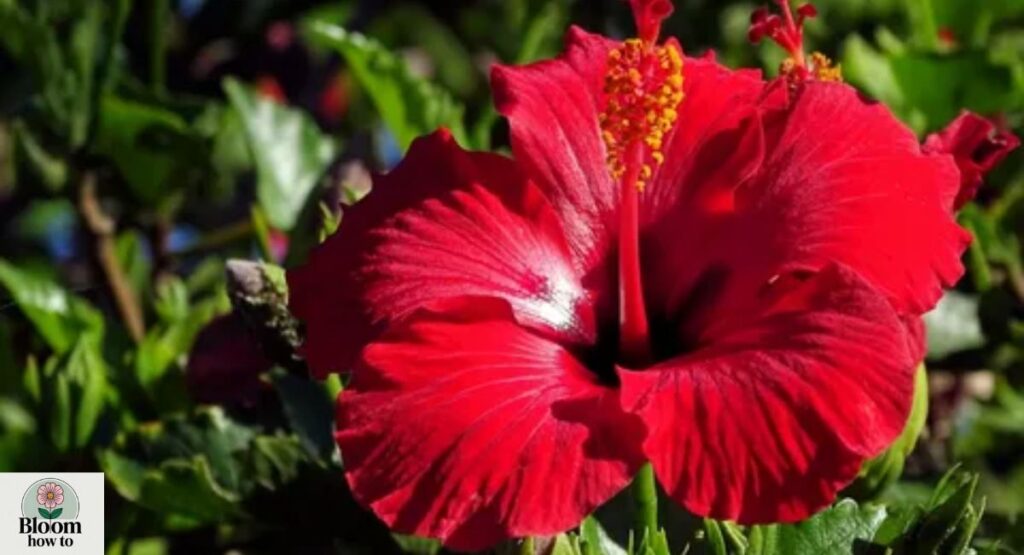
Symbolism of Hibiscus
Hibiscus is a show-stopper with its large trumpet-shaped blooms in red, pink, orange, and yellow. In many cultures, hibiscus represents love, femininity, and beauty. Hawaiians wear hibiscus in their hair as a sign of joy, while in China it symbolizes fame and personal glory.
Gardening Tips for Hibiscus
This tropical plant thrives in full sun and well-drained soil. In the USA, hibiscus grows best in warm regions or as a patio container plant. Regular watering, monthly feeding, and light pruning keep the shrub blooming from summer to fall. Protect it from frost in colder states.
Hyacinth
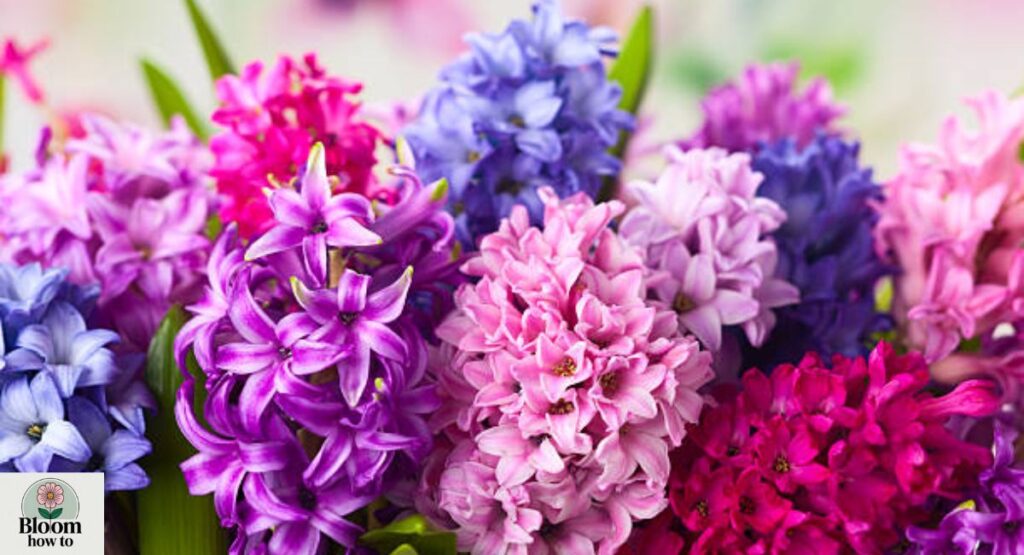
Symbolism of Hyacinth
Hyacinth is famous for its sweet fragrance and clusters of star-shaped flowers. It blooms in purple, blue, pink, or white shades. Symbolically, it stands for sincerity and constancy, making it a flower often linked to trust, honesty, and deep connections.
Gardening Tips for Hyacinth
Plant hyacinth bulbs in autumn for springtime blossoms. They prefer well-draining soil and full sun to partial shade. In American gardens, they’re great for borders, containers, or cutting gardens. Once planted, they’ll return yearly, filling your garden with vibrant color and fragrance.
Hollyhock
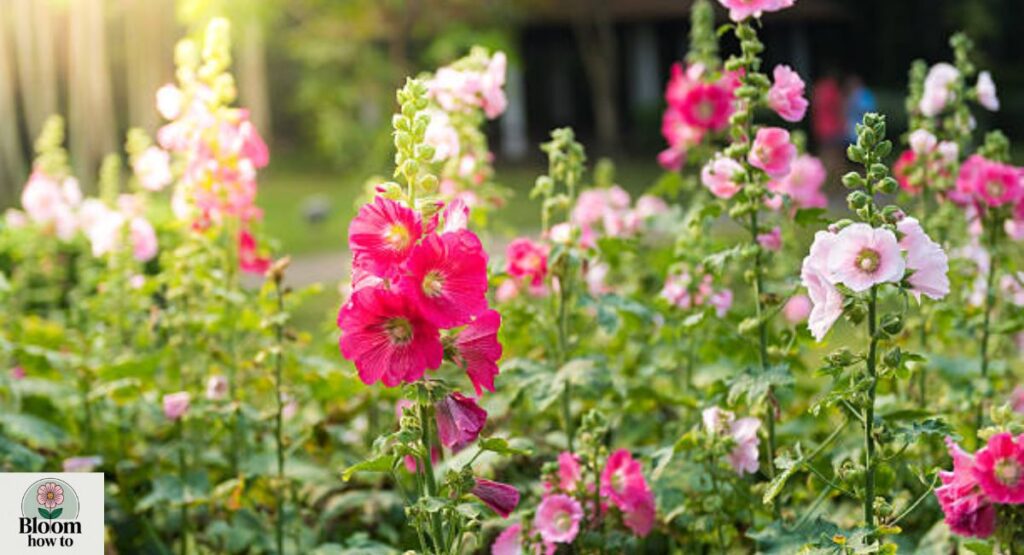
Symbolism of Hollyhock
Hollyhock is a tall, old-world flower often seen in cottage gardens. Its large, disc-like blossoms appear in pink, red, yellow, and purple. Symbolically, it represents ambition and fertility, with its towering stems reminding us of growth, strength, and the will to reach higher goals.
Gardening Tips for Hollyhock
This flower thrives in full sun and moist, well-drained soil. In the USA, hollyhocks grow well along fences or walls where they get support. They can reach up to eight feet tall, so staking may be necessary. Cut back after flowering to encourage reseeding for the next season.
Hydrangea
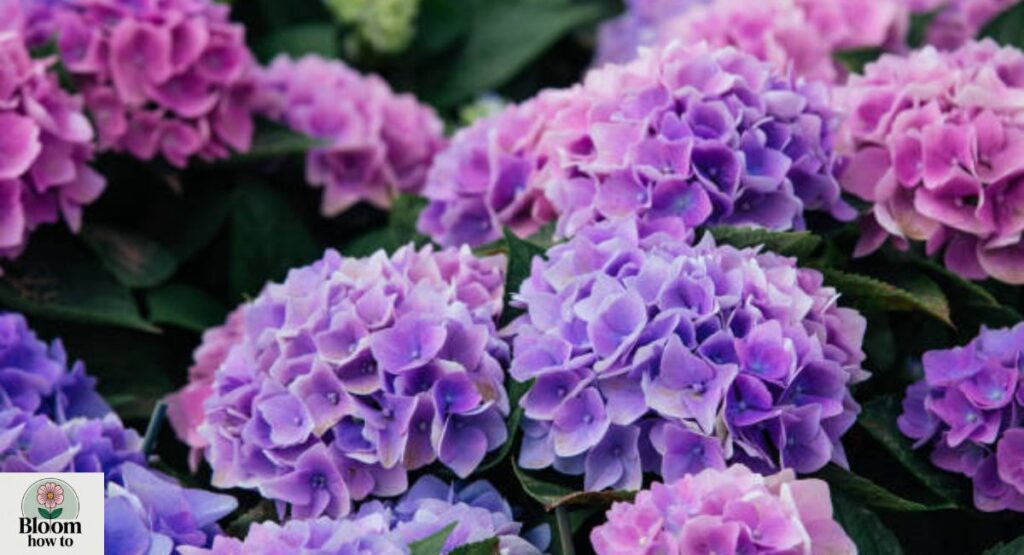
Symbolism of Hydrangea
Hydrangea is admired for its huge globe-shaped blooms that change color with soil pH. Blue blossoms appear in acidic soil, while pink shades grow in alkaline soil. This flower represents gratitude, grace, and heartfelt emotions, making it popular in both gardens and floral arrangements.
Gardening Tips for Hydrangea
Hydrangeas love morning sun and afternoon shade, especially in warmer American climates. They grow best in rich, moist soil that drains well. Prune them after blooming to keep shrubs neat and encourage new flowers. Their long-lasting clusters make them ideal as a garden focal point.
Heather
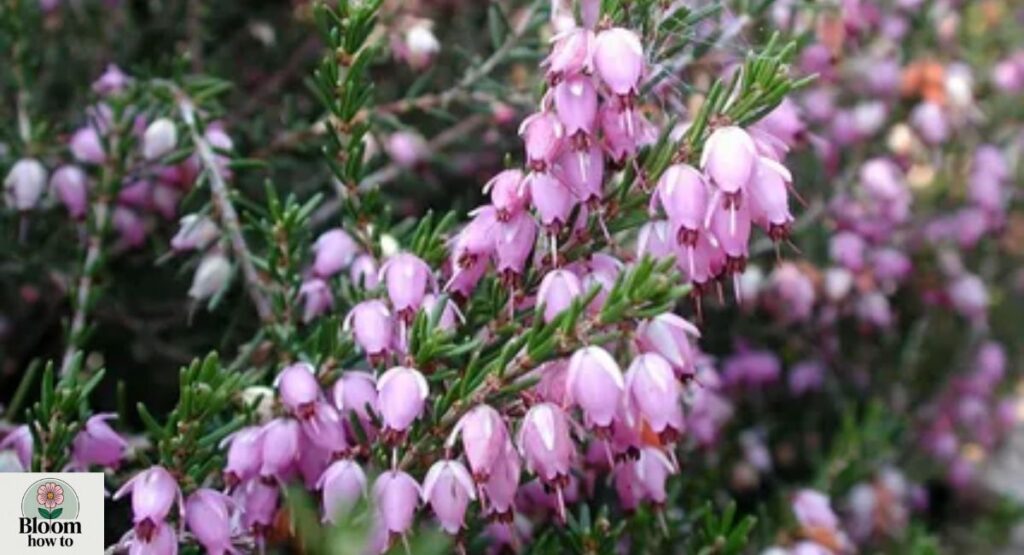
Symbolism of Heather
Heather is a low-growing shrub with tiny bell-shaped flowers in pink, purple, or white. In Scottish folklore, it symbolizes good luck and protection. White heather is considered especially lucky and was often carried for blessings. Its dense growth also provides shelter for bees and small wildlife.
Gardening Tips for Heather
Heather thrives in acidic, sandy soil with excellent drainage. It prefers full sun but tolerates partial shade. In American gardens, it’s often used as ground cover or in rock gardens. Light pruning after flowering helps keep it compact and encourages healthier growth for the following season.
Hellebore
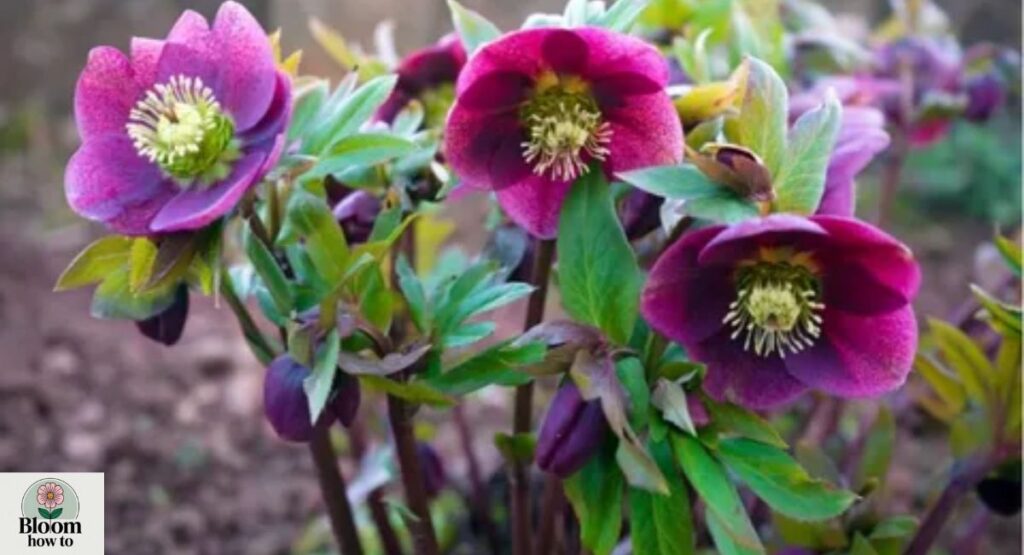
Symbolism of Hellebore
Hellebore, often called the Christmas rose, blooms in late winter when most gardens are still asleep. Its petals come in white, green, pink, and even purple. Symbolically, hellebore represents tranquility and serenity, often linked with peace during the coldest months of the year.
Gardening Tips for Hellebore
This plant prefers partial to full shade and rich, well-drained soil. In American gardens, hellebores are perfect for shady borders or woodland landscapes. They need regular watering but dislike soggy conditions. Protect them from harsh afternoon sun, and they’ll brighten your garden when few others bloom.
Honeysuckle
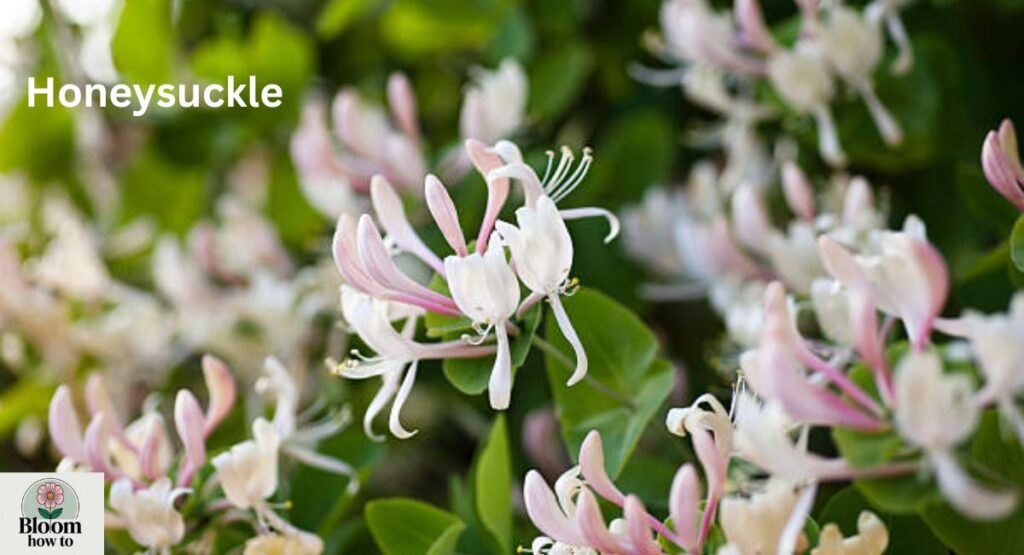
Symbolism of Honeysuckle
Honeysuckle is famous for its sweet fragrance and tubular blooms in white, yellow, pink, and red. Known as woodbine in folklore, it symbolizes devotion and happiness. In many cultures, its scent is believed to bring positive energy, love, and joyful connections to the home.
Gardening Tips for Honeysuckle
This vigorous climbing vine thrives in full sun to partial shade. In the USA, it’s commonly used to cover fences, trellises, or garden walls. Honeysuckle prefers moist, well-drained soil. Trim after flowering to control its spread and encourage strong growth. Birds and butterflies adore its nectar.
Hosta
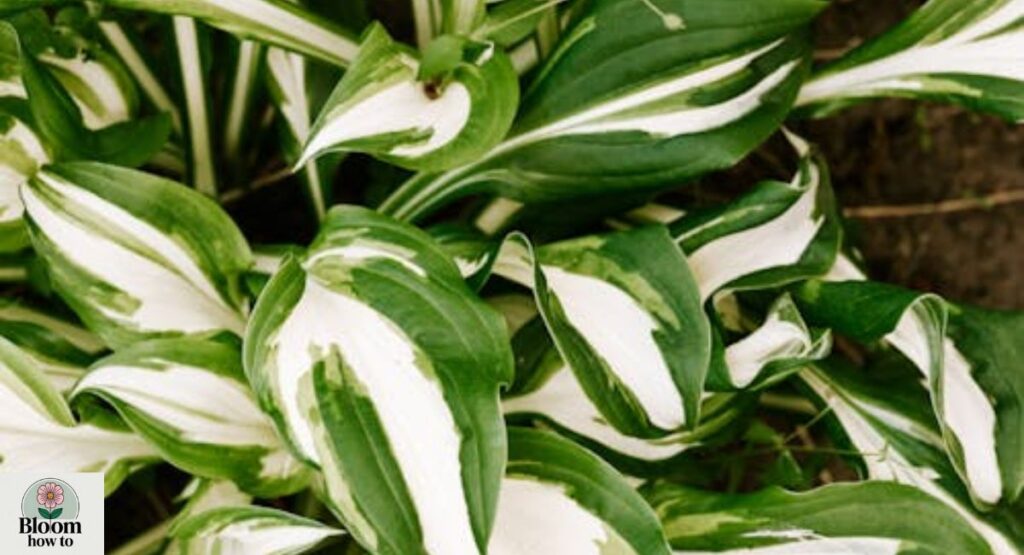
Symbolism of Hosta
Hosta, often called plantain lily, is prized for its lush foliage and elegant summer blooms in lavender or white. Its meaning is tied to devotion and friendship, making it a calming and grounding plant. The broad leaves also add a sense of peace to shaded spaces.
Gardening Tips for Hosta
Hostas love shade to partial shade and moist, fertile soil. In American landscapes, they are favorites for borders, woodland gardens, or shady corners. While low-maintenance, they need consistent watering in dry weather. Their foliage attracts slugs, so gardeners often use mulch or barriers for protection.
Heliotrope
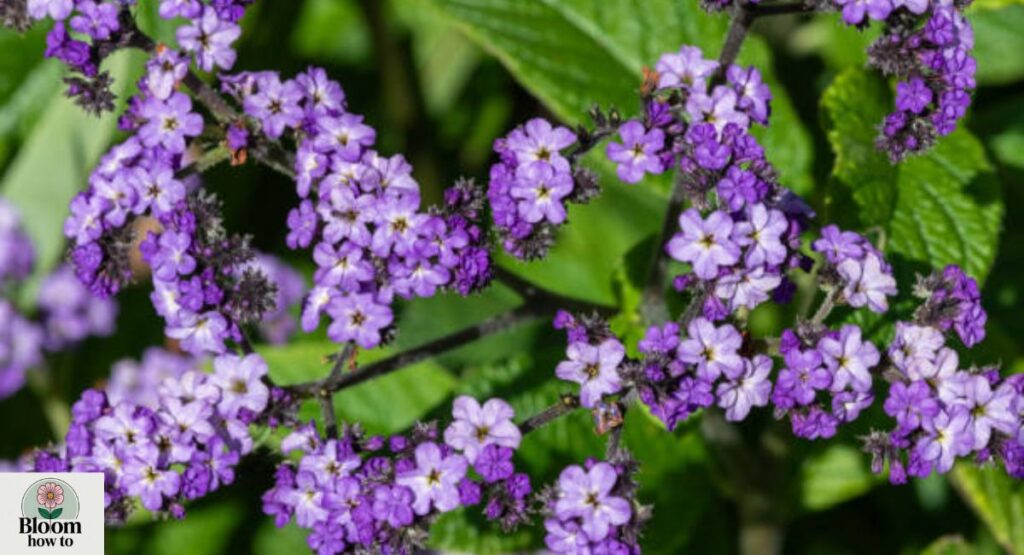
Symbolism of Heliotrope
Heliotrope is known for its clusters of tiny purple, blue, or white blooms with a sweet vanilla-like fragrance. In symbolism, it stands for eternal love and devotion, which is why it was cherished in Victorian gardens. Its perfume is often described as soothing, romantic, and unforgettable.
Gardening Tips for Heliotrope
This sun-loving flower thrives in full sun and rich, well-drained soil. In the USA, heliotropes are often planted in containers or borders where their fragrance can be enjoyed up close. They need consistent moisture and occasional feeding. Deadheading spent flowers encourages fresh, fragrant blooms all season.
Helenium
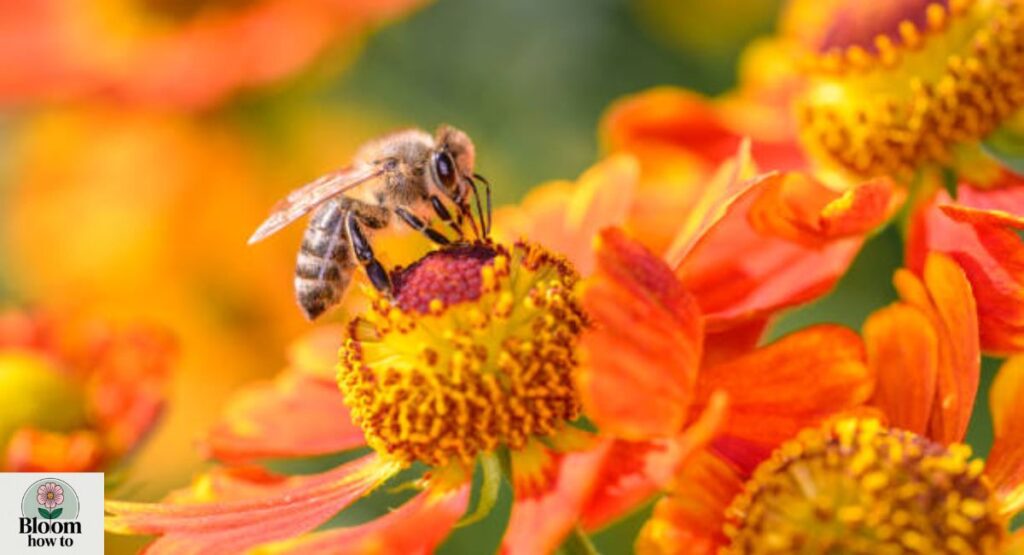
Symbolism of Helenium
Helenium, sometimes called sneezeweed, brightens late summer gardens with daisy-like flowers in yellow, orange, and red. Once seen as a sign of tears, today it symbolizes cheerfulness and vitality. Its fiery colors add warmth to gardens just as other blooms begin to fade.
Gardening Tips for Helenium
This perennial thrives in full sun and moist, fertile soil. In American gardens, it blooms from midsummer to fall, attracting bees and butterflies. Tall varieties may need staking to stay upright. Regular watering is key, and dividing clumps every few years keeps plants vigorous and healthy.
Heuchera
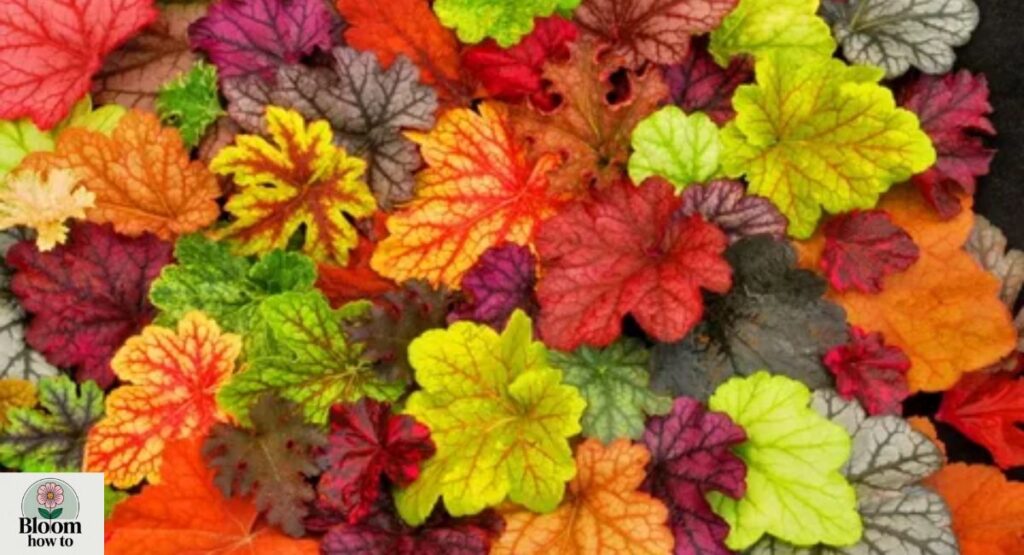
Symbolism of Heuchera
Heuchera, better known as coral bells, is valued more for its foliage than its blooms. Leaves come in shades of green, purple, silver, and red, creating year-round beauty. Symbolically, heuchera represents healing and renewal, making it a meaningful addition to shaded gardens.
Gardening Tips for Heuchera
This plant grows best in partial to full shade and well-draining soil. In the USA, heucheras are popular for borders, containers, and ground cover. Their small pink or white flowers attract hummingbirds, while the colorful foliage adds contrast. Light trimming and consistent moisture help maintain their vibrant look.
Hesperis (Dame’s Rocket)
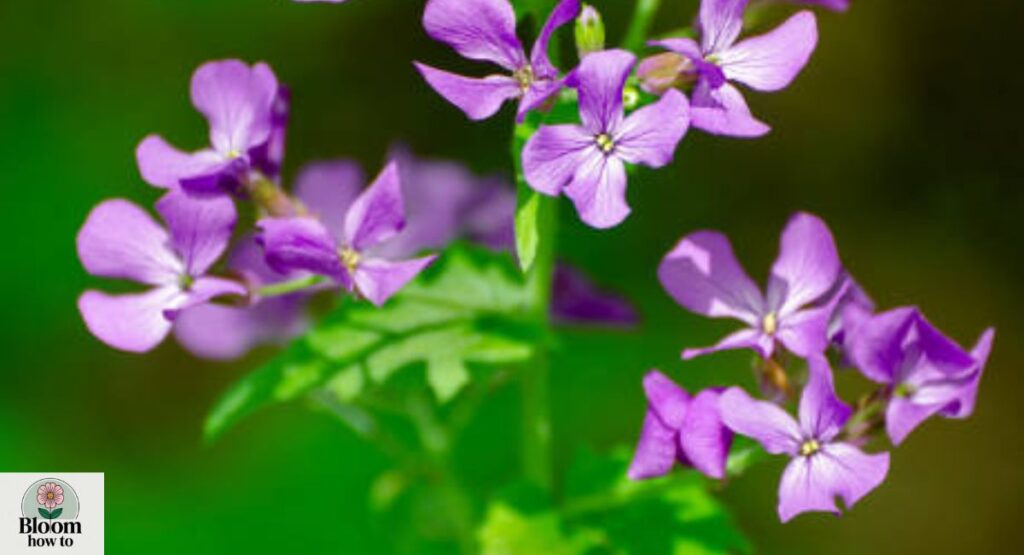
Symbolism of Hesperis
Hesperis, also known as Dame’s Rocket, produces clusters of fragrant purple, pink, or white flowers. Blooming in late spring, it often resembles phlox but carries its own charm. Symbolically, it represents motherly love and affection, with its evening fragrance linked to warmth and care.
Gardening Tips for Hesperis
This biennial plant thrives in full sun to partial shade and prefers well-drained soil. In American gardens, it’s often sown directly outdoors in spring or fall. Hesperis spreads easily by seed, creating naturalized patches in meadows or borders. Minimal maintenance makes it a favorite for wildflower gardens.
Heliconia
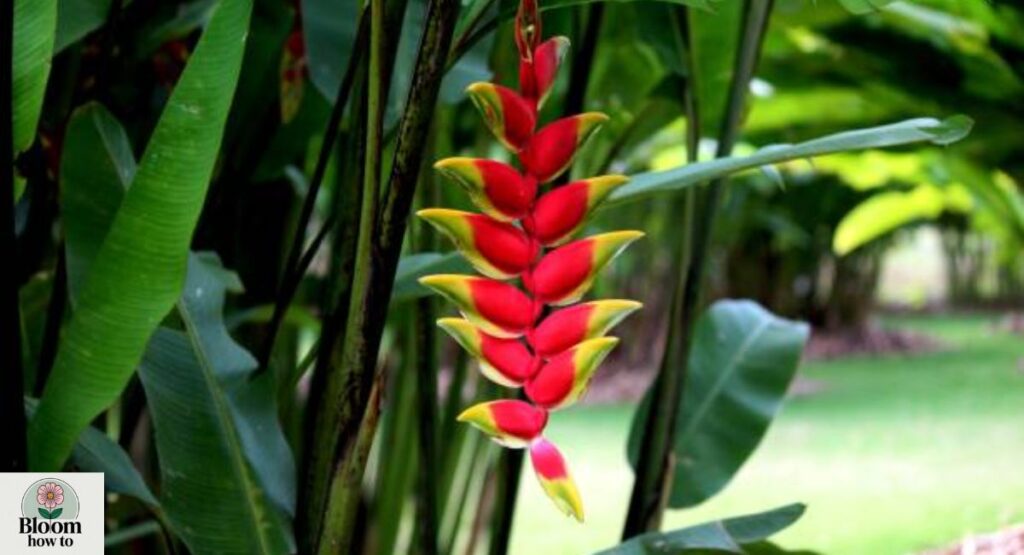
Symbolism of Heliconia
Heliconia, sometimes called lobster claw or wild plantain, is a tropical flower with striking red, orange, and yellow bracts. True flowers are hidden inside the colorful bracts. It symbolizes tropical beauty and elegance, representing exotic charm and vibrant energy in gardens or floral displays.
Gardening Tips for Heliconia
This plant loves warm, humid conditions and rich, organic soil. In the USA, heliconias grow best in tropical states like Florida and Hawaii or in controlled greenhouses. They need consistent moisture, bright light, and high humidity. When grown outdoors, they add a dramatic tropical touch year-round.
Bonus Rare Flowers Starting with H
Hairy Toad Lily (Tricyrtis hirta)
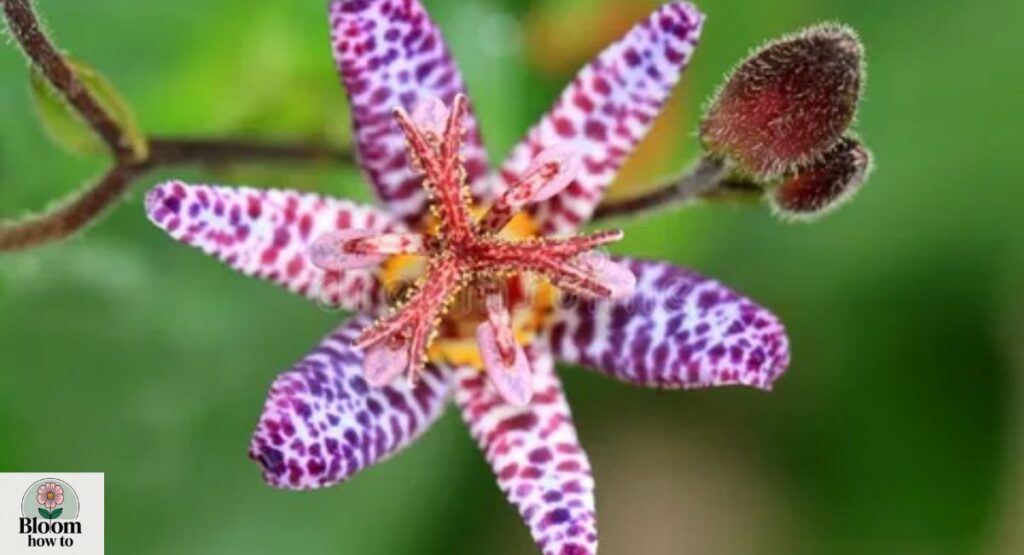
The Hairy Toad Lily is a shade-loving perennial from Japan, famous for its orchid-like blooms spotted in purple and white. Symbolically, it represents mystery and hidden beauty, as it blooms in late summer when most gardens are fading.
In the USA, it grows well in partial to full shade with moist, fertile soil. Its unique flowers make it a standout in woodland gardens, and it pairs beautifully with hostas and ferns.
Hawkweed (Hieracium)
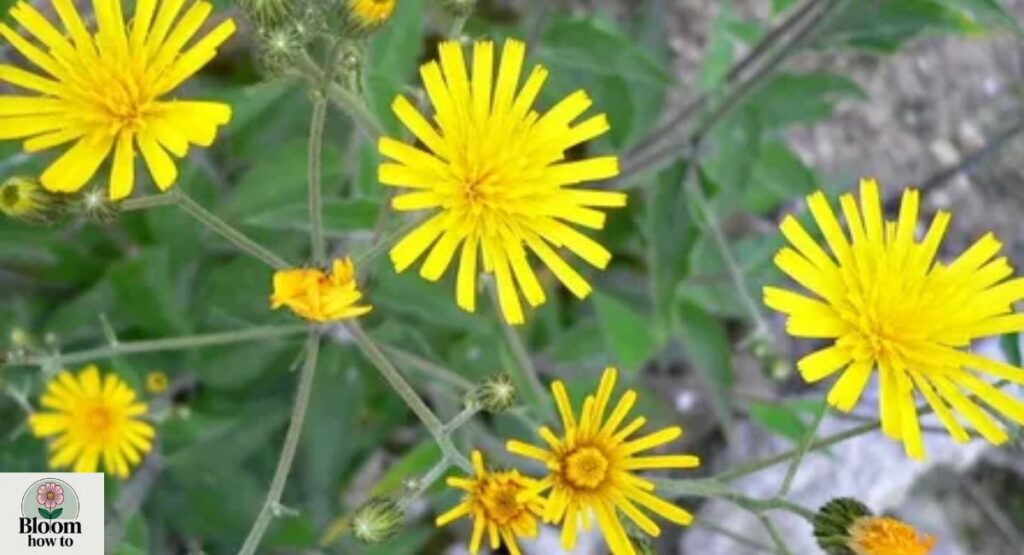
Hawkweed is a wildflower with fiery orange or yellow petals, often found in meadows and rocky areas. Symbolically, it stands for strength, resilience, and independence. Folklore once suggested hawks ate it to sharpen their eyesight.
It thrives in sunny, dry conditions, making it a hardy option for American wildflower gardens. Because it spreads quickly, some gardeners grow it in controlled patches to prevent invasiveness.
Hottentot Fig (Carpobrotus edulis)
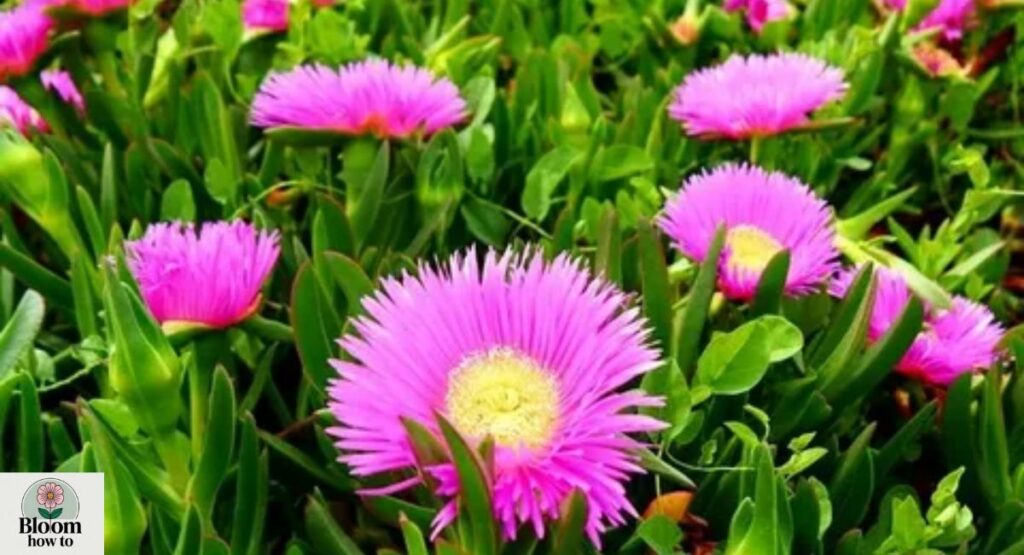
The Hottentot Fig, also known as ice plant, is a succulent with bright pink, daisy-like blooms. In symbolism, it represents protection and endurance, as it grows in harsh coastal areas. Its fruit has even been used in traditional remedies.
In the USA, it is often found in California coastal regions, where it prevents soil erosion. It prefers sandy soil and full sun, and once established, it requires little water.
Horned Poppy (Glaucium flavum)
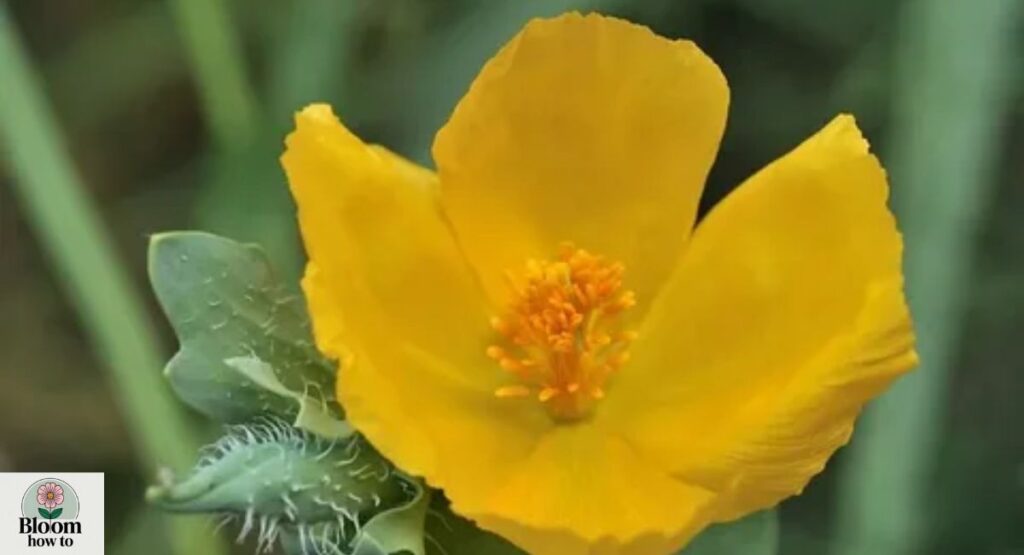
The Horned Poppy gets its name from the long seed pods resembling horns. With golden-yellow flowers, it symbolizes hope and survival in harsh environments, as it often grows in rocky, sandy areas.
For American gardeners, it thrives in well-drained sandy soil and full sun. Its silvery foliage adds beauty even when not in bloom, making it a striking ornamental plant.
Himalayan Blue Poppy (Meconopsis betonicifolia)
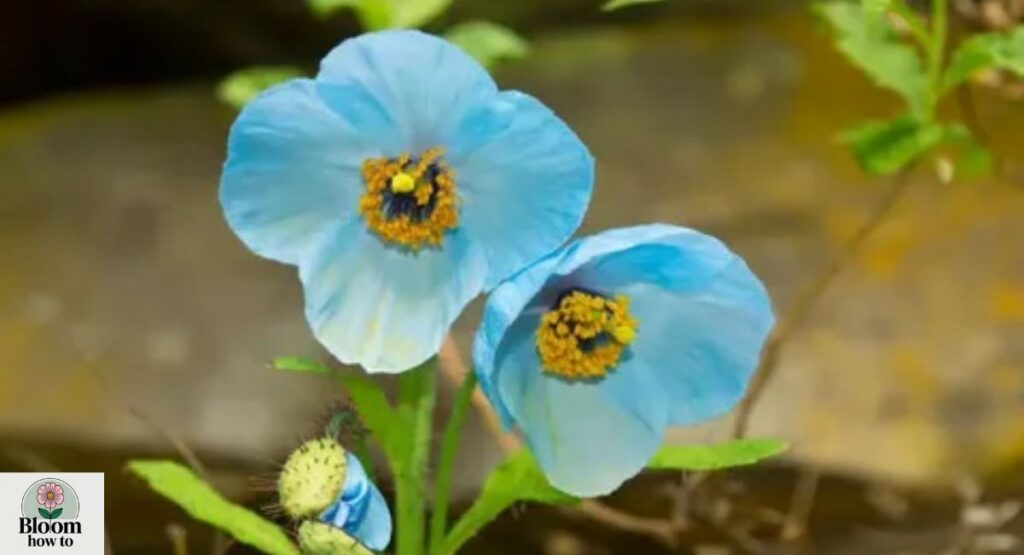
The Himalayan Blue Poppy is one of the rarest and most enchanting flowers. Its brilliant sky-blue petals symbolize dreams, peace, and rarity. Gardeners often see it as a prize due to its exotic look.
In the USA, it grows best in cool, moist climates such as the Pacific Northwest. It needs rich, acidic soil, consistent moisture, and partial shade. Though tricky to grow, its breathtaking beauty rewards patient gardeners.
Comparison Table of H-Flowers
Here’s a quick overview of the most popular flowers that start with H including their bloom times, colors, heights, and sun needs:
| Flower | Bloom Time | Common Colors | Average Height | Sun Requirement |
| Hibiscus | Summer to Fall | Red, Pink, Yellow, White | 3–15 feet | Full Sun |
| Hyacinth | Spring | Purple, Pink, Blue, White | 6–12 inches | Full Sun to Partial Shade |
| Hollyhock | Summer | Pink, Red, Yellow, Purple | 5–8 feet | Full Sun |
| Hydrangea | Summer to Fall | Blue, Pink, White, Green | 3–6 feet | Morning Sun, Afternoon Shade |
| Heather | Late Summer–Fall | Pink, Purple, White | 1–2 feet | Full Sun to Partial Shade |
| Hellebore | Winter to Spring | White, Pink, Green, Purple | 1–2 feet | Partial to Full Shade |
| Honeysuckle | Spring to Summer | White, Yellow, Pink, Red | 10–20 feet (vine) | Full Sun to Partial Shade |
| Hosta | Summer | Lavender, White (foliage varies) | 6 in–3 feet | Shade to Partial Shade |
| Heliotrope | Summer to Fall | Purple, Blue, White | 1–3 feet | Full Sun |
| Helenium | Midsummer–Fall | Yellow, Orange, Red | 2–5 feet | Full Sun |
| Heuchera | Spring–Summer | White, Pink (colorful foliage) | 6–18 inches | Partial to Full Shade |
| Hesperis | Late Spring–Early Summer | Purple, Pink, White | 2–3 feet | Full Sun to Partial Shade |
| Heliconia | Year-Round (tropics) | Red, Orange, Yellow | 3–15 feet | Partial Shade to Full Sun |
| Rare H-Flowers | Varies | Orange (Hawkweed), Star-shaped (Huernia) | 6 in–2 feet | Dry Sun / Bright Light |
How to Grow and Care for H-Flowers in USA Gardens
Best Climate and Soil Conditions
Most flowers starting with H thrive in the diverse climates of the USA, from tropical heliconias in Florida to cold-hardy hellebores in the Northeast. The key is to match each flower’s origin with your local climate. Well-drained soil is important for nearly all varieties, though tropical flowers need richer organic soil while alpine types prefer sandy or acidic mixes.
Watering and Sunlight Needs
Sunlight requirements differ among H-flowers. Hibiscus and heliotrope love full sun, while hostas and heucheras prefer shade. Watering should be consistent but not excessive. A good rule is to keep soil slightly moist but never soggy. Using mulch can help conserve water during hot American summers.
Common Pests and Solutions
Many H-flowers attract butterflies, bees, and hummingbirds, but they can also attract pests. Aphids, slugs, and spider mites are common issues. Organic solutions like neem oil, companion planting, or introducing ladybugs can reduce infestations naturally without harming pollinators.
Famous Cultural and Historical References of Flowers Starting with H
Hibiscus in Hawaiian Traditions
In Hawaii, the Hibiscus isn’t just a garden flower—it’s a national symbol of delicate beauty and hospitality. Women often wear it tucked behind the ear to show their relationship status. In addition, this flower has been used in teas and skincare across Polynesian culture for centuries.
Heather in Scottish Folklore
Heather has long been tied to Scottish legends of luck and protection. Warriors carried sprigs into battle, while brides included it in bouquets for good fortune. Even today, white heather remains a cherished wedding flower symbolizing purity and blessings.
Hyacinth in Greek Mythology
The Hyacinth owes its name to a tragic Greek myth. According to the legend, Apollo accidentally caused the death of a youth named Hyakinthos, and from his blood sprang the first hyacinth bloom. This story made the flower a symbol of rebirth, memory, and eternal love.
Seasonal Bloom Guide for Flowers Starting with H
Spring Blooms
Hyacinth, Hellebore, and Hesperis make spring gardens colorful and fragrant. Their early blossoms bring life after the winter frost, especially in cooler states across the USA.
Summer Stars
Hibiscus, Heliotrope, and Hollyhock shine during the hot summer months. They love full sun and reward gardeners with bold, vibrant flowers that last through the season.
Fall Favorites
Hydrangea, Heather, and Helenium extend color into autumn. Their late blooms provide food for pollinators and rich tones for fall landscapes.
Winter Survivors
Hellebore is one of the few flowers starting with H that bloom in winter. Known as the Christmas rose, it brings cheer to snowy gardens.
H Flowers in Art, Literature, and Popular Culture
Hibiscus in Modern Art
Artists often use Hibiscus to represent exotic beauty and feminine power. In tropical-themed paintings and textile prints, its large petals symbolize passion and energy. In American pop culture, hibiscus motifs appear in surfwear, tattoos, and Hawaiian leis.
Heather in Poetry and Songs
Heather has inspired countless poets and musicians. In Scottish ballads, it stands for love, protection, and luck. Even modern songs use “Heather” as a metaphor for beauty and longing, showing how timeless this flower’s symbolism remains.
Hyacinth in Classical Literature
The tragic story of Hyacinth from Greek mythology made it a recurring theme in literature. Writers often used the flower to symbolize grief, rebirth, or unending love. Its elegance is still referenced in novels and poems to evoke deep emotions.
Medicinal and Healing Uses of Flowers Starting with H
Hibiscus for Health and Wellness
Hibiscus tea is widely known in the USA for lowering blood pressure and improving heart health. Rich in antioxidants and Vitamin C, it’s often recommended for boosting immunity. In ancient Egypt, hibiscus drinks were used to cool the body during the desert heat.
Hellebore in Ancient Remedies
Although parts of Hellebore are toxic, it was historically used in small doses as a medicinal herb. Ancient Greeks believed it could cleanse the body of evil spirits and melancholy. Today, it’s mostly admired for its beauty, but its place in traditional healing remains a fascinating fact.
Honeysuckle in Herbal Medicine
The Honeysuckle plant has long been valued in Chinese medicine. Its flowers were used to treat fevers, sore throats, and infections. Even in modern herbal therapy, honeysuckle extracts are found in teas, tinctures, and natural remedies for their anti-inflammatory properties.
Spiritual and Feng Shui Meanings of Flowers Starting with H
Hydrangea in Feng Shui Balance
In Feng Shui, Hydrangea represents harmony and heartfelt emotion. Because of its round clustered blooms, it symbolizes completeness and unity in families. Many people in the USA place hydrangea arrangements near entryways to welcome peace and emotional balance into their homes.
Hosta for Spiritual Protection
The Hosta plant, with its broad leaves, is believed to act like a shield. In some cultures, it’s planted at the corners of gardens to ward off negative energy. Gardeners also say that hostas promote calmness, making them perfect for meditation spaces and shaded retreats.
Hibiscus in Love and Energy Rituals
For centuries, Hibiscus has carried spiritual connections to passion, feminine energy, and love. In some traditions, hibiscus flowers are used in offerings to invite romance and positivity. Its vibrant red and pink colors are thought to stimulate joy and vitality in daily life.
Environmental Benefits of Flowers Starting with H
Heather as a Pollinator Magnet
Heather is famous for attracting bees and butterflies. Its late-summer blooms provide nectar when other flowers have faded. In Scotland and parts of the USA, fields of heather act as natural sanctuaries for pollinators, supporting biodiversity and local ecosystems.
Helenium for Soil Health
The deep roots of Helenium help improve soil aeration and structure. Gardeners often grow them in mixed borders because they enhance the soil while also brightening landscapes. Their resilience against pests reduces the need for chemicals, making them an eco-friendly gardening choice.
Honeysuckle for Wildlife Support
Climbing Honeysuckle is more than just a fragrant vine. Its tubular flowers feed hummingbirds, while its berries provide food for birds in late summer. Many American gardeners plant honeysuckle along fences not only for beauty but also to encourage wildlife in urban spaces.
Best USA Gardening Tips for Flowers Starting with H
Adapting to American Climates
Many flowers starting with H thrive across different parts of the USA, but success depends on local climate. For example, Hibiscus loves the warmth of Florida and Texas, while Heather grows best in the cooler regions of the Northeast and Pacific Northwest. Always check USDA hardiness zones before planting.
Soil and Watering Practices
Hydrangea and Hosta prefer rich, moist soil, while Heliotrope needs well-draining beds to avoid root rot. In drier states like Arizona, drip irrigation works well for Helenium and Honeysuckle. Mulching is also a smart choice across American gardens because it keeps the soil cool and conserves water during hot summers.
Landscaping Ideas with Flowers Starting with H
Creating Colorful Borders with Hollyhock and Helenium
Tall flowers like Hollyhock and Helenium are excellent for back borders in American gardens. Their vertical height adds drama, while their warm colors attract butterflies. Many gardeners in the Midwest use them to frame vegetable patches or garden fences for both beauty and pollinator support.
Designing Shade Gardens with Hostas and Heucheras
Hosta and Heuchera are shade-loving perennials that thrive under large trees or along north-facing walls. Their colorful foliage and small blooms create a layered effect, perfect for woodland-style landscapes. In suburban USA gardens, mixing these with ferns builds a peaceful, low-maintenance retreat.
Adding Tropical Flair with Hibiscus and Heliconia
For southern states like Florida, Louisiana, or California, Hibiscus and Heliconia bring a bold tropical touch. Their large blooms and exotic bracts transform patios and poolside areas into vibrant paradises. Planting them in clusters near seating areas enhances both beauty and relaxation.
Conclusion
Exploring flowers that start with H is like opening a secret book of natural wonders. From the bold hibiscus to the delicate heather, each bloom carries its own symbolism, beauty, and gardening secrets. These flowers don’t just decorate—they tell stories, inspire traditions, and transform landscapes.
Adding even one of these plants to your yard can bring more than color. You invite meaning, fragrance, and pollinator-friendly benefits into your outdoor space. Whether you dream of tropical elegance with heliconia, or classic charm with hollyhock, there’s an H-flower that fits your garden perfectly.
So, the next time you’re planning your garden in the USA, remember these 15+ supernatural flowers starting with H. They’re not just plants—they’re nature’s way of adding history, symbolism, and unforgettable beauty right outside your door.
FAQs
What flower with H has a long blooming season?
Hydrangea and Hibiscus bloom for months, from summer into fall, giving continuous garden color.
What flower with H symbolizes hope?
Heather is often linked to hope, protection, and good luck, especially in folklore.
What flower with H is the most fragrant?
Hyacinth and Honeysuckle are known for their strong, sweet fragrance.
What flower starts with H?
Common examples include Hibiscus, Hydrangea, Hollyhock, Heather, and Hosta.
What is a purple flower that starts with H?
Hyacinth, Heliotrope, and Heather all produce stunning purple blooms.

Welcome to bloom how to! I’m Anam Sattar, an AI Powered SEO, and Content Writer with 4 years of experirnce.
I help websites rank higher,grow traffic, and look amazing. My goal is to make SEO and web design simple and effective for everyone.
Let’s achieve more together!
